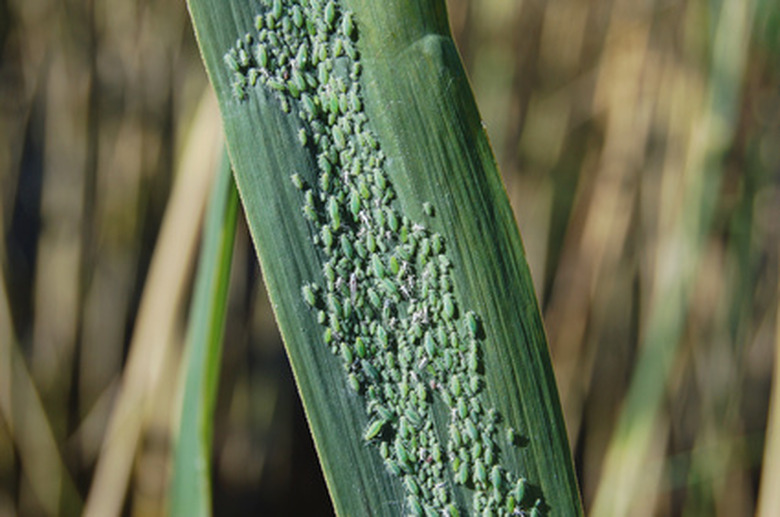How To Clear Pests From Hydrangeas
According to Auburn University, the most common pest problems to affect hydrangeas include Japanese beetles, red spider mites, aphids, leaf tiers, rose chafers and oyster scale. Each of these pests leaves distinct signs on a hydrangea, so diagnosing the pest problem is simple. Once you have narrowed down the pest based on the signs, apply a pest remedy to rid your hydrangea bushes of the problem.
Hand Control
Step 1
Mix detergent in a bucket with a garden hose. Add approximately 3 tbsp. of detergent per gallon of water to make a solution that is 2 percent in strength.
Step 2
Place the bucket of soapy water next to your hydrangea bush.
- According to Auburn University, the most common pest problems to affect hydrangeas include Japanese beetles, red spider mites, aphids, leaf tiers, rose chafers and oyster scale.
- Each of these pests leaves distinct signs on a hydrangea, so diagnosing the pest problem is simple.
Step 3
Hand-pick Japanese beetles and rose chafer beetles off of your hydrangea bush, and throw them into the bucket of soapy water.
Step 4
Squish any rolled or sandwiched leaves to kill any caterpillars nesting in the leaves. These caterpillars, known as leaf tiers, nest in the stacked and rolled leaves, eventually killing them.
Aphids
Step 1
Examine your hydrangea for signs of aphids. Ants crawling on hydrangea leaves are often a sign of aphid infestations. If you see ants, turn over the youngest leaves of your plants. The presence of small, pear-shaped, yellow or green insects means that you have an aphid infestation.
- Hand-pick Japanese beetles and rose chafer beetles off of your hydrangea bush, and throw them into the bucket of soapy water.
- Squish any rolled or sandwiched leaves to kill any caterpillars nesting in the leaves.
Step 2
Mix an insecticidal soap according to the directions on the package. You can purchase insecticidal soap at a garden center.
Step 3
Place the insecticidal soap mix into the holding chamber of a garden hose spray applicator.
Step 4
Attach the garden hose to the spray applicator.
Step 5
Spray your hydrangea bush with the insecticidal soap every two to three days, until the aphids are gone.
Oyster Shell Scale
Step 1
Look on the upper ends of the stems for signs of oyster shell scale. Scale insects are typically covered with waxy shells that protect the insects while they feed. Insects may appear to be white, yellow, brown or black and will measure around 1/10 inch in diameter.
- Mix an insecticidal soap according to the directions on the package.
Step 2
Purchase horticultural oil from a garden center. Mix the oil according to package directions.
Step 3
Pour the oil into the holding chamber of a pressurized spray applicator.
Step 4
Prime the applicator by grasping the handle and pumping up and down.
Step 5
Grasp the holding chamber with one hand and the applicator wand with the other. Open the spray valve on the applicator wand, and apply the mixture directly over the oyster shell scale. The oil will coat the bugs and smother them without harming the plant.
- Purchase horticultural oil from a garden center.
- Open the spray valve on the applicator wand, and apply the mixture directly over the oyster shell scale.
Tip
Spider mites are typically a problem during hot, dry weather. Though the mites are difficult to detect, the presence of webbing, as well as distorted growth among new shoots, are indicators of spider mites. The mites cannot be controlled by insecticides. The only way to control them is to water your hydrangea well to keep it healthy.
Warning
Always wear protective clothing when mixing chemicals or horticultural oil.
Things Needed
- Bucket
- Detergent
- Insecticidal soap
- Garden hose spray applicator
- Horticulture oil
- Pressurized spray applicator
